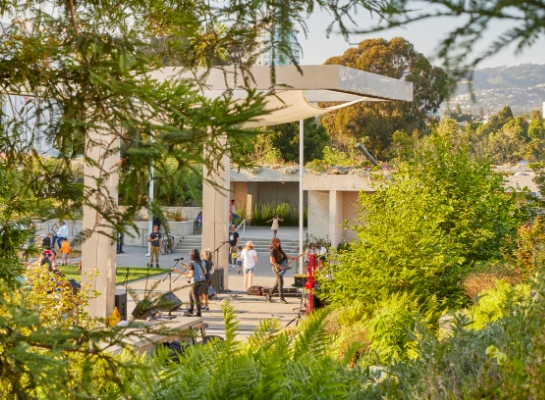Walter Hood is an acclaimed landscape architect known for his innovative approach to designing urban spaces. From parks to plazas, Hood has reimagined landscapes in cities across the United States. Here are some of his most groundbreaking projects:
Transitional Landscapes: Hood’s designs often blur the lines between nature and man-made structures, creating transitional spaces that invite people to interact with their surroundings in new ways. One example is Splash Pad Park in Oakland, California, where Hood incorporated elements of the natural environment, such as a stream and rocks, into the design of the park.
Community Engagement: Hood believes in the importance of involving local communities in the design process. He often hosts workshops and meetings with residents to gather input and ideas for his projects. This collaborative approach has led to landscapes that are tailored to the needs and desires of the people who live and work in the surrounding area.
Historical Context: In his designs, Hood pays homage to the history of the urban spaces he works in. For example, at the Dequindre Cut Greenway in Detroit, Michigan, Hood preserved the industrial remnants of the former railway while adding new landscaping and amenities for residents to enjoy. This blending of past and present adds depth and meaning to his landscapes.
Environmental Sustainability: Hood is committed to creating landscapes that are environmentally sustainable. He incorporates green infrastructure, such as rain gardens and bioswales, into his designs to help manage stormwater runoff and improve water quality. By prioritizing sustainability, Hood’s landscapes not only benefit the community but also the natural environment.
Social Justice: Hood’s designs often address issues of social justice and equity. In projects like the Broad Museum Plaza in Los Angeles, California, he created inclusive spaces that welcome people of all backgrounds and abilities. By promoting diversity and inclusivity in his landscapes, Hood is helping to create more just and equitable urban environments.
In conclusion, Walter Hood’s innovative landscapes challenge conventional ideas of urban design and create spaces that are dynamic, inclusive, and sustainable. By reimagining urban spaces in this way, Hood is paving the way for a new generation of landscape architects to think creatively and critically about the cities we live in.

